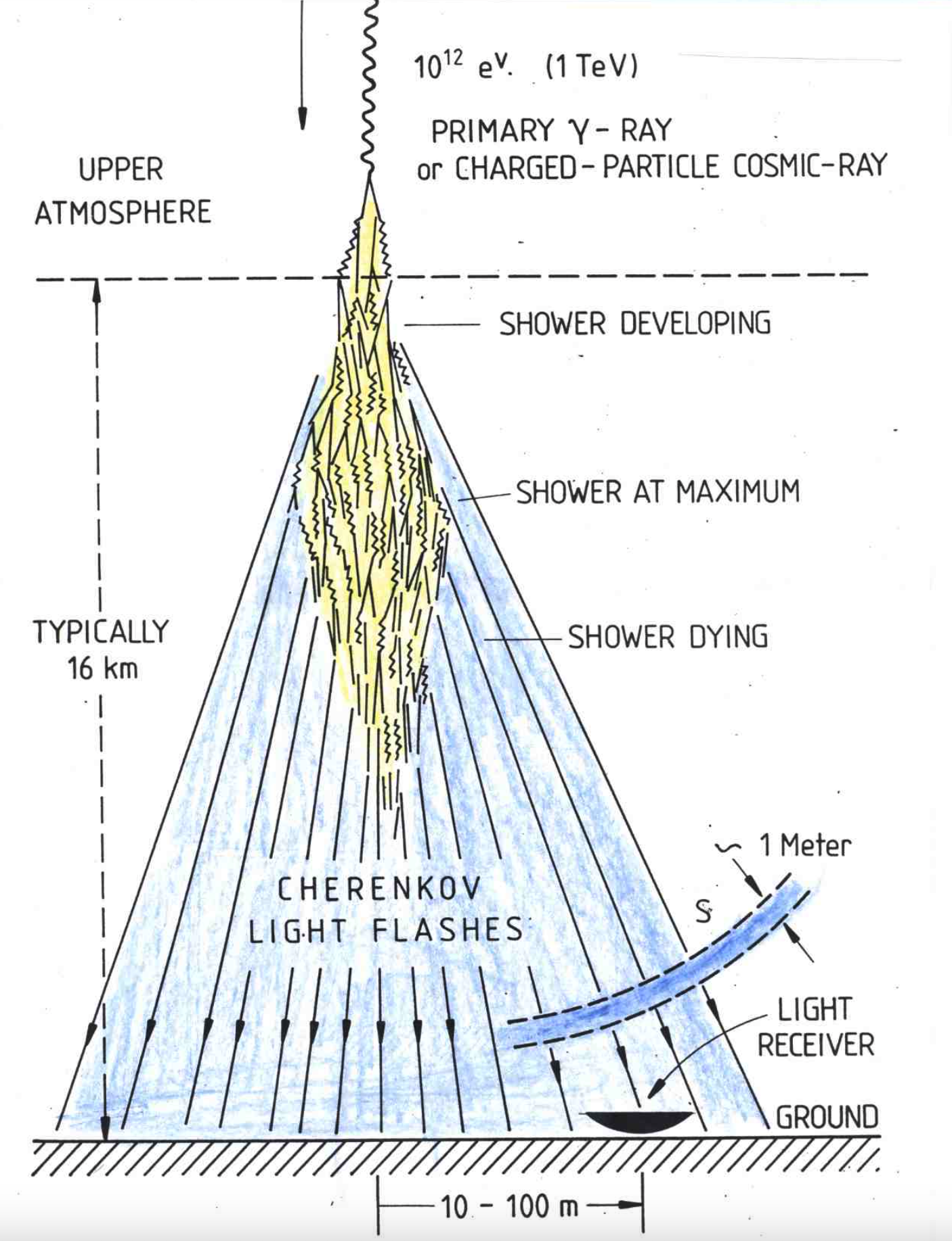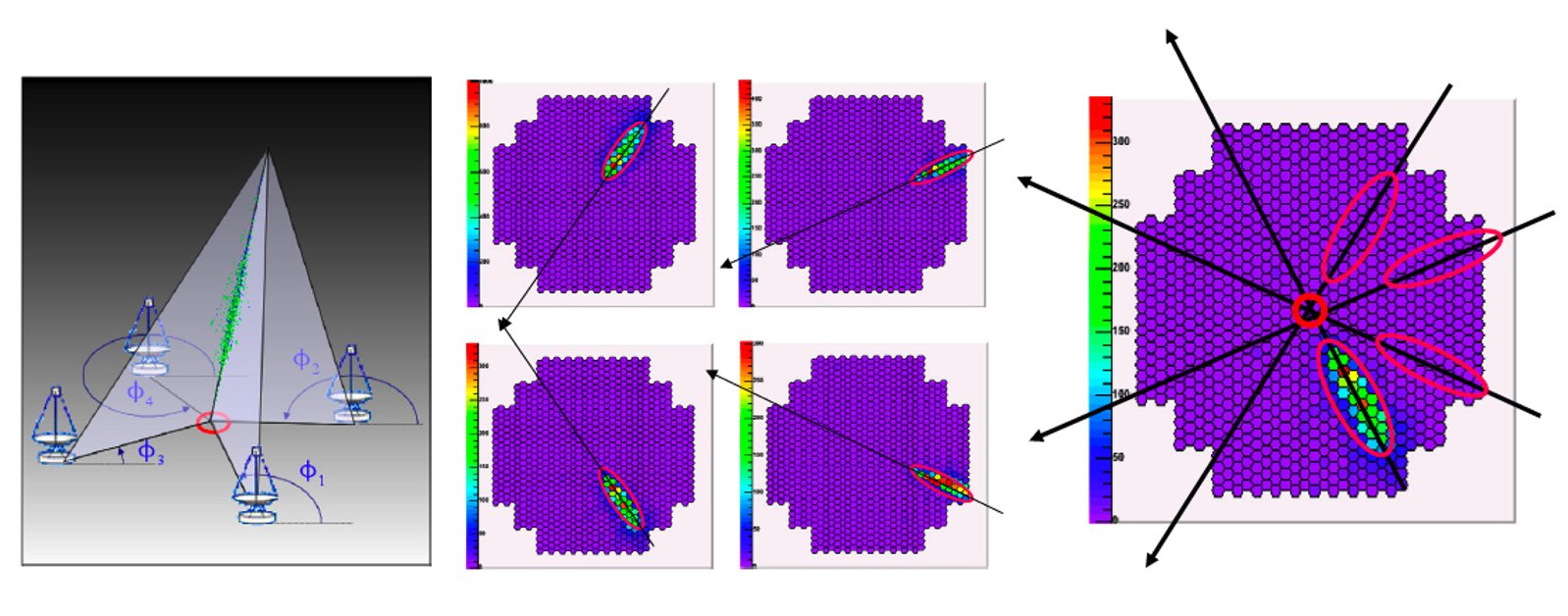Very high-energy Astrophysics
Technique
When a very high-energy (VHE) photon with energy ~1 Tera-electronvolts impinges the Earth atmosphere it generates a particle shower which, in turn, produces a flash of Cherenkov radiation lasting 5-20 nanoseconds in the energy range 300 <𝛌 < 500 nanometers. The Cherenkov light spreads over a cone reaching a diameter of about 100-200 metres on Earth. A schematic view is presented in this Figure [Credits: Weekes, T.C, talk at the 2012 Fermi Summer School].
This light is reflected by the telescope mirrors on the focal plane of a camera which converts them into photo-electrons. This signal is acquired by a data handling system and stored in local computers for further processing.
A relevant improvement was obtained by adopting the stereoscopic approach as shown in this Figure [Credits: de Naurois M. and Mazin D., 2015., C.R. Physique 16, 610].
The advantages of the array approach are improving both the background rejection and the angular and energy resolutions.
At higher energies, (0.1 – 100) Peta-electronvolts, particle showers are converted into Cherenkov radiation by means of large tanks filled with water, in combination with other arrays for background discrimination. These arrays are called particle sampling arrays (PSAs).
Current arrays
Currently, three major imaging atmospheric Cherenkov arrays (IACTs) are operational, two in the Northern (MAGIC & VERITAS) and one in the Southern hemisphere (H.E.S.S.), respectively. On the other hand, the three major PSAs are LHAASO, HAWC and TIbet AS-𝞬, all of them in the Northern hemisphere.
Their observations allowed us to ramp up the number of sources to about 350 at energies above a few tens of Giga-electronvolts. As can be seen in this Figure [Credits: https://www.tevcat.org/, Wakely S.P. & Horan D., 2008, ICRC, 3, 1341], several classes of both Galactic and extra-galactic sources have been detected by the current IACTs, with a large fraction of them (about 30%) without a known counterpart, making the VHE astrophysics a very promising field of investigation.
This post is also available in: Italian



